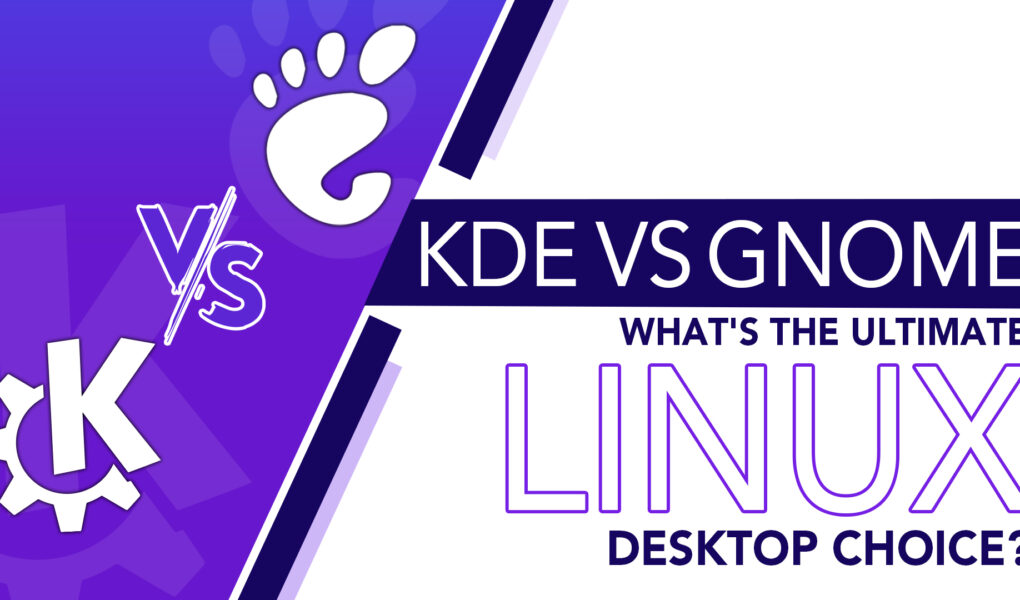As members of the Linux community, we are fortunate to have a vast array of choices when it comes to selecting a desktop environment. Two of the most recognized and highly appreciated options are KDE and GNOME. Both are open-source licenses and provide extensive customization options and features. However, this often puts us in trouble as we find it hard to choose between the two.
Well, not anymore, as here in this article, we will delve into the details of both KDE and GNOME, evaluate their key benefits, and ultimately determine the best Linux desktop solution.
Understanding KDE
KDE, or K Desktop Environment, has its roots dating back to 1996 as a graphical interface for Linux. Today, it has matured into a fully-fledged and robust desktop environment renowned for its user-friendly interface, customization capabilities, and support for a diverse array of applications.
With regards to the interface, KDE prides itself on its highly user-friendly design, which enables users to easily navigate and access the functions they require. The customization options available in KDE are extensive, allowing users to tailor their desktop experience to their specific preferences and needs. With support for a wide range of applications, KDE provides a versatile platform for users to get their work done.
Furthermore, KDE is known for its stability and ease of use. The desktop environment has been thoroughly tested and refined over many years, making it a reliable choice for users who value stability and a smooth user experience.
Advantages of using KDE
KDE offers a multitude of benefits for its users, chief among them being its stability and user-friendliness. With a sleek and intuitive interface and ample customization options, KDE provides a personalized experience for users who value customization and ease of use. Moreover, its compatibility with a diverse array of applications makes it a versatile choice for those who require access to specialized software.
Understanding GNOME
GNOME, or GNU Network Object Model Environment, has its origins dating back to 1997 as a desktop environment for the GNU project. Over the years, it has grown into a streamlined and accessible desktop environment, prioritizing simplicity and ease of use for its users.
The interface is characterized by its clean and user-friendly design, making it easy for users to navigate and find what they need. It also integrates with Gnome Shell, a graphical user interface that provides users with a streamlined and efficient way to access their applications and settings.
Besides, GNOME is known for its speed and efficiency. The desktop environment is optimized for performance, providing a fast and responsive experience for users who value speed and productivity.
Advantages of using GNOME
GNOME offers several key advantages to its users, one of the most notable being its emphasis on simplicity and ease of use. With a clean and user-friendly interface and integration with Gnome Shell, GNOME provides a streamlined experience for those who prefer a straightforward and efficient desktop environment.
Likewise, its compatibility with a variety of hardware configurations, combined with its speed and performance, make it a valuable choice for users who prioritize performance and productivity.
KDE vs GNOME: The Ultimate Choice
| Features | KDE | GNOME |
| User Interface | Customizable experience with a wide range of options | Simple and user-friendly interface |
| Customization | Wide range of customization options | Limited customization options focus on simplicity |
| Performance | Known for its excellent performance | Generally, faster than KDE, performance may vary based on hardware specifications |
| Applications and software support | Supports a diverse range of applications | Offers support for a wide range of applications; availability may vary |
| User Community | Boasts a large and active user community | Has a thriving community of users |
| Personal Preferences | Ideal for users who value customization options | Ideal for those who prioritize a simple and straightforward experience |
| Hardware Specifications | Can run effectively on various hardware setups | Known to perform faster on less powerful hardware |
| Intended Use Case | Ideal for users who require specialized software | Suited for those who prefer a straightforward and uncomplicated experience |
Conclusion
Both KDE and GNOME are excellent choices for a Linux desktop environment. The ultimate choice will depend on the individual’s needs and preferences. Regardless of choice, both KDE and GNOME offer a stable, user-friendly, and customizable experience for Linux users. It’s recommended that you try both KDE and GNOME to determine which one is the best fit.



